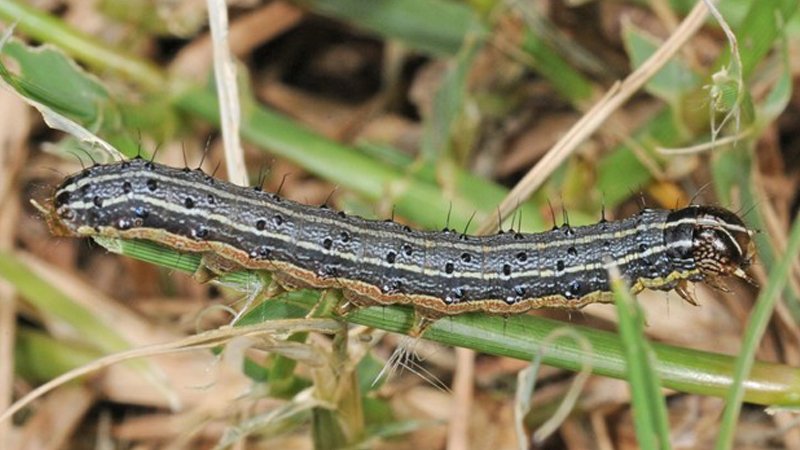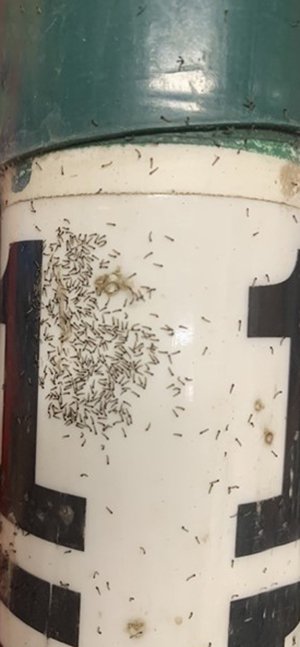It is that time of year again, when superintendents from the Gulf Coast to Canada might find themselves fighting off fall armyworms.
Other than the fact that armyworms can cause significant damage in golf course turf as well as row crops, little is known about what makes them tick, move or even eat.
The caterpillars that are the bane to many golf course superintendents are the larval stage of the fall armyworm moth, known scientifically as Spodoptera frugiperda. Intolerant to cold, fall armyworms are native to South Florida and South Texas in the U.S., as well as other tropical zones globally, but its destructive habits stretch far beyond its native range thanks to its ability to migrate hundreds of miles on a tailwind.

They prefer Bermudagrass, but with multiple generations possible throughout the summer, and each new adult able to move hundreds of miles, they can be found as far away as the Midwest, Northeast or even southern Canada by autumn under the right conditions.
Researchers agree that hot, dry conditions are optimal for armyworm activity, but there seems to be little predictability as to when and why they are worse in some years, such as the widespread infestation of 2021.
 The adult moths do not feed during their short stage of the armyworm life cycle, but they are voracious as they progress through the larval caterpillar stage. Fortunately, there are many effective tools available to manage them.
The adult moths do not feed during their short stage of the armyworm life cycle, but they are voracious as they progress through the larval caterpillar stage. Fortunately, there are many effective tools available to manage them.
Larva, according to Dave Shetlar, Ph.D., professor emeritus at Ohio State, can do little damage as first, second or third instar stage. By the time they reach their fourth or fifth instar stage, or when they are a half-inch or more in length, it might be too late. Damage manifests first as what might appear to be drought stress, but can quickly become catastrophic. Therefore, scouting can be critical, says the USGA Green Section.
Left untreated, hundreds of armyworms might be present once damage becomes noticeable. Researchers at Michigan State suggest a pyrethroid labeled for use on turfgrass, including bifenthrin or cypermethrin. OSU’s Shetlar also suggests chlorantraniliprole (Acelepryn) or pyrethroids for curative control as well as diamides for effective preventive control.
The female adults lay masses, each containing up to 1,000 eggs, on vertical objects in or adjacent to turf, such as ballwashers, 150-yard markers and directional stakes (right). The eggs hatch at their new home in just a few days, where they fall to the ground and soon begin feeding.
The migratory life cycle of the armyworm is a curious one. The caterpillars later pupate and eventually emerge as moths. Unable to overwinter outside their native habitat, armyworms will die at the first frost, and the process will begin all over again the following year as new adults head north from Texas and Florida.

